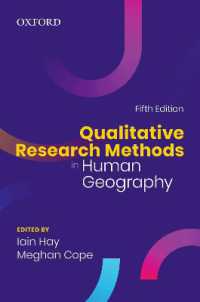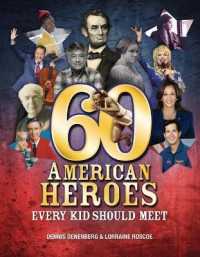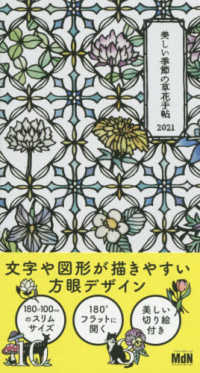Full Description
After its publication in early 1791, A Simple Story was widely read in England and abroad, going into a second edition in March of the same year. The novel's young heroine, Miss Milner, scandalously declares herself in love with her guardian, Dorriforth, a Catholic priest. Dorriforth returns her love and is released from his vows. Though the pair go on to marry, the second half of the novel reveals the disastrous and far-reaching consequences of Miss Milner's subsequent adulterous affair.
The critical introduction to this Broadview edition considers such issues as Catholicism, theatricality, the theatre, and the masquerade, while the appendices provide a wide selection of cultural, biographical, and literary contexts for the novel.
Contents
Acknowledgements
Introduction
Elizabeth Inchbald: A Brief Chronology
A Note on the Text
A Simple Story
Appendix A: Inchbald's Other Writings
Letter "To The Artist" (1807)
From Inchbald's Daily Pocket Diaries (1788)
Facsimile of a typical week's diary entries
Transcription of two week's diary entries
From Selected Plays
From Wives as They Were and Maids as They Are (1797)
From Every One Has His Fault (1793)
Remarks in The British Theatre (1808)
Hannah Cowley, The Belle's Stratagem (1780)
Robert Jephson, The Count of Narbonne (1781)
William Shakespeare, The Winter's Tale (1611)
Appendix B: Eighteenth-Century Reception of A Simple Story
Reviews of A Simple Story
Anna Laetitia Barbauld, The British Novelists (1810)
The Critical Review; or, Annals of Literature (1791)
The Gentleman's Magazine and Historical Chronicle (1791)
Impartial Review (1791)
Lady's Magazine (1791)
Mary Wollstonecraft, Analytical Review (1791)
Exchange of Letters between William Godwin and Elizabeth Inchbald on the Day of Mary Wollstonecraft'sDeath (10 September 1797)
Godwin's Letter to Inchbald
Inchbald's First Reply to Godwin
Inchbald's Second Reply to Godwin
Maria Edgeworth, Letter to Elizabeth Inchbald (14 January 1810)
Appendix C: Cultural Contexts
Portrait of John Philip Kemble
Gender and the French Revolution
From Mary Wollstonecraft, A Vindication of the Rights of Woman (1792)
From Mary Wollstonecraft, An Historical and Moral View of the Origin and Progress of the French Revolution (1794)
From Edmund Burke, Reflections on the Revolution in France (1790)
From William Godwin, Enquiry Concerning Political Justice and Its Influence on Morals and Happiness (1793)
Literature on Education
From Hannah More, Strictures On The Modern System of Female Education (1799)
From Catharine Sawbridge Macaulay Graham, Letters on Education (1790)
From Mary Wollstonecraft, Thoughts on the Education of Daughters (1788)
Masquerade
From Eliza Haywood, The Female Spectator (1744-46)
"Historical Account of Masquerades," Lady's Magazine (May 1775)
"An Essay on Masquerades," Lady's Magazine (December 1777)
Sample Advertisements for Masquerades and Costumes, The World (30 January 1788)
From Hannah Cowley, The Belle's Stratagem (1780)
Female Transgression
From William Godwin, Memoirs of the Author of a Vindication of the Rights of Woman (1798)
Elizabeth Inchbald, Letter to William Godwin (18 September 1805)
From Trials for Adultery: Or, The History of Divorces (1779)
Select Bibliography








